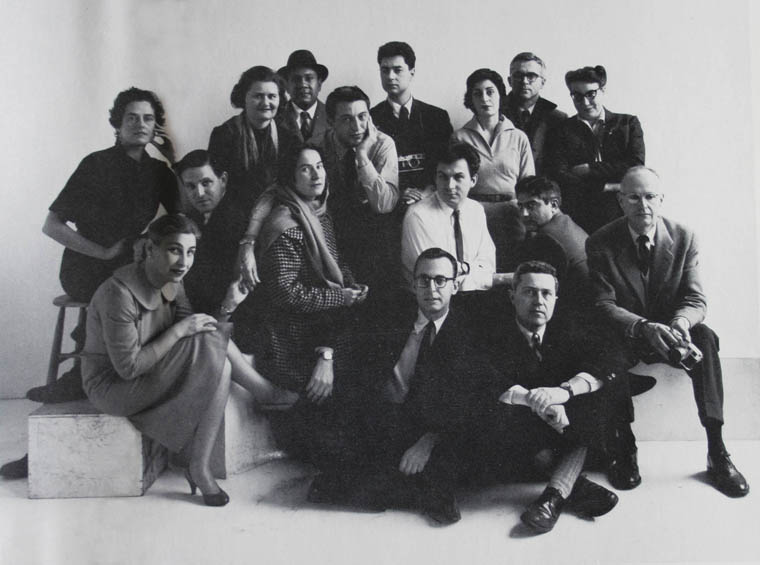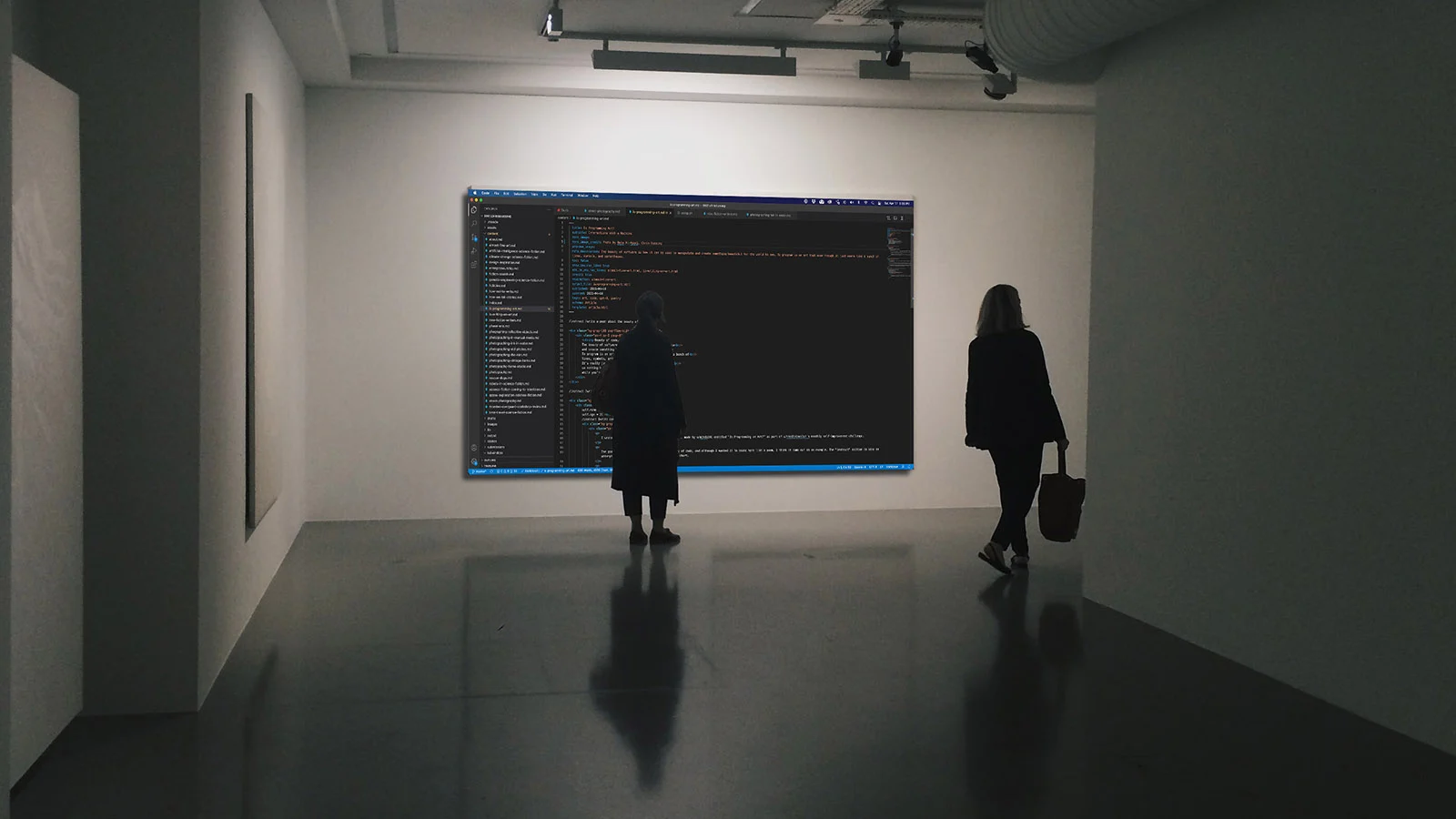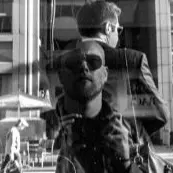Is It Art?
Formal Analysis
Formal Analysis and Critique (developed by Caroline Battle)
“Writer Henry James once proposed three questions you could productively put to an artist’swork. The first two were disarmingly straightforward: What was the artist trying to achieve? Didhe/she succeed? The third’s a zinger: Was is worth doing?”-From Art & Fear, By David Bayles and Ted OrlandDescription: NamingDescribe the work without using value words (beautiful, ugly, good, bad)-avoid using the phrase “I like”Name the elements of the work (line, movement, space, light, relationship)Name the technical qualities (materials, craft)Describe the subject matter. What is it about?Analysis: Relationship of PartsDescribe how the work is organized as a complete composition.How is the work constructed or planned?Identify some points of emphasis.InterpretationDescribe how the work makes you feel.What are the expressive qualities that stand out to you? What adjectives would you use to describethem? (tragic, humorous, etc.)Does the work remind you of things you’ve seen or experienced before? (analogy, metaphor)How does the work relate to other ideas or events in the world, or issues in your other studies?Judgment/EvaluationPresent your opinions of the work’s success, potentials or challenges.What could be improved, carried further or emphasized?Compare it with other people’s works to make a point.How original is the piece?Remember:Critique is not about tearing each other down. Rather, we are learning and helping each other understandwhat makes a piece of art successful or unsuccessful. It is the role of the artist to gain feedback frompeers to inform future work. It is the role of the critics to give helpful insight and perspective about thework presented.**It is usefulto havesomeone take notes for you during your critique so you can listen and respond at the time, but have something to refer back to lateras a reminder of what was said.
Medium
I think the first thing to get out of the way, or to think about, is our assumptions about the correlation of medium and art. I bring this up, because the entire conversation of whether or not something is art, more often than not starts with medium. Medium means the material and the how of how something is made. Painting is a medium, sculpture (clay, bronze, etc.) is a medium, performance is a medium. So frequently these conversations devolve in to arguments like “painting is art, but photography is not” (for example). So let’s start by challenging that entire notion.
If you were to get a can of white paint, and roll it on to the walls of your room, would you have just created a work of art? Most people would probably agree that you had not. Now, what if you add a second color, perhaps splitting the wall in to two with one color above the other? Is it art now? What about a third color? How about if the shapes change? What if we paint a face, or a figure, or an object? When does it become art?
I think that this thought experiment shows that medium is not sufficient, or even necessary, to defining something as a work of art. And therefore, it is impossible to dismiss something as not art, based on its medium alone.
Interpretation
Context
Things that are considered art are called art to prevent people from confusing them for things that are not art. Let’s use an airplane as an example. The distinguishing feature has historically been use; an airplane is used to transport people and things over large distances. It is a functional object, designed for a practical and commercial purpose. It isn’t something that many people would consider art.
What if we put that airplane in an art museum?
This is the notion of context, that where you encounter something dictates much of its meaning. It’s purpose is effected by the place and time you interact with it. An airplane in an art museum is not there to transport anyone, it no longer has any useful purpose. Suddenly it’s entire existence is up for discussion; why is it here? what is going on? who put it here? what did they want to convey to us viewers?
Medium and context are probably enough to get in to a really interesting conversation that dives in to things like intent and meaning, narrative and dialog. But before we have such an open and freewheeling discussion, there is an elephant in the room we need to discuss. People who have decided certain things are “definitely not art” (like airplanes). You may in fact be one of them! So let’s address this notion, first by stepping back in time and looking at the development of art.
History
Initially art was purposeful, useful. Conveying how to hunt, what spirits and deities and rituals a group should remember, depicting religious stories to make them easier to remember for a populace that perhaps could not read. Art also more often than not represented something, it was not abstract. A buffalo painted on a wall, a spirit’s visage captured in a mask, a soldier perishing a foe in an important battle. Throughout history the realism of the representation waxed and waned. In the earliest art there was little consistency of realism or even stylization. Some societies, the Egyptians for example, introduced a structure and style that permeated works done by all artists in a time. They created a visual language that could be carried across works and help people identify and understand things. The Greeks and Romans focused so intently on form and anatomy that to this day many statues from that time seem real enough to come to life. Then various regions and religions rejected this, they thought that artists were trying too hard to be god like, to be creators. For many centuries Western art again became about the religious story alone. Then in the Renaissance things began to swing not only back to more realistic depictions, but the entire function of art was shifting from serving the purpose of religion, to that of the wealthy and simply depicting things artists themselves were interested in.
In the 19th century a major shock came with the advent of modern art and conceptual art. Not only did the previous goals of realistic representation get set aside, but the reign of painting and sculpture were challenged as well. Suddenly, from a historic perspective, anything could be art. Context came to the forefront, ideas and purpose superseded imagery.
But this was only the most recent shift in the purpose, and definition of what is considered art. But of course we are humans, and we like to define things, and we love to tell each other why we are wrong.
Critique
Judgement
Gatekeeping
Gatekeeping is a way to apply categorization to give something an implicit value simply by being of a certain type. Medium has long been a favorite means of art critics and the elite to try to not only say which art is better than another, but to exclude entire classes at a time. Painting is at the top, sculpture somewhere behind, and everything else is either craft or garbage. This is the kind of nonsense that was readily believed by society in the 19th century, and unfortunately still persists in some circles today. Perhaps modified, or slightly widened, or even come at from the opposite point of view (painting is dead!). But it is all hogwash.
Fine Art
“Fine art” is the granddaddy of gatekeeping, a means of categorizing mediums in to masterworks and utter trash unworthy of discussion. Painting and perhaps sculpture were the original “fine arts”, while everything else was relegated to “craft” or perhaps “applied art”. This allowed the 1% to place some artisans and their crafts above others, elevating the value of their interests and the works they acquired.
The use of the term has been changed somewhat over time, where now people use it to categorize certain works of art within a medium as “fine art” while others of the same medium are not. A great example is “fine art photography”, which by the original definition of fine art makes no sense. Photography is a medium, and it is either included in your definition of a fine art or not. It has become common to use the term fine art as a qualifier, but it is always enlightening to step back and look at real world examples. I would say that 90% of the time I run across “fine art photography” it is by a mediocre photographer who does way too much post processing trying to sell their prints in a booth at a small art fair. So if it is not useful for segregating mediums, or from telling the quality of one work over another, what use is the term at all?
What is Art?
Let’s switch tactics, and instead of focusing on exclusion, let’s talk for a while about inclusion. What criteria are used to call something a work of art?
Subjectivity
A simple thought experiment: if the definition of art was objective and fixed, what would that look like? If there was a single, correct, unified definition of art, then it would look like Newton’s laws of motion, for example. But there is no single, unified definition of art, which leaves the word “correct” as the last piece to study, and where all of the argument seems to arise.
In math we can prove via theorem, or disprove via exception. In logic we have a series of rules to evaluate an arguments validity by its construction. In Philosophy we approach the subjective, but even there we tend to categorize by theorem, and argued by rational merit. In art, however, it is telling that extremely educated people who dedicated their lives to art criticism do not even agree as to what constitutes art, let alone the quality of a work. As mentioned above, the criteria has changed over time and has differed within groups and places, which suggests there is a cultural component as well. This suggests that there is not an objective criteria at all.
Another interesting thing to contemplate is how as the definition shifts over time, and among groups, it is not even static to works that were made during those periods or by those people. For example, Van Gogh is widely considered to not only be an artist, but a great artist, a master, and yet was dismissed in his own time.
What other means are left to us to decide what is art?
Experts
As human beings we are drawn to experts. Some experts are people who have studied their field, received education, or simply been part of that world for much of their career or life. These may be artists themselves, gallerists, critics, theorists, or perhaps celebrities or other taste makers.
Wisdom of the Crowd
It can be difficult, when a consensus has been born in your time to go against it. We have clearly developed as a social being who requires at least some level of acceptance by society to survive. So, in the face of gatekeepers and the agreement of their followers and a lack of strong opposing voices, it can be tempting to fall in to line with the latest thinking.
Fashion and Fad
What this confirms is that there are periods of art marked by movements, styles become popular and then fade only to return again later. It is complex, some things are driven by innovation, such as photography or now digital art, but even these are eventually subsumed, combined, utilized in different ways. They change over time. Society values different messages as well, and sometimes one form is more apt for telling a certain kind of story, or simple fads and fashions change. Someone comes along with a potent, resonant message and it inspires others to adopt their methodology and approach.
There is No Definition of Art
Nothing universal, unified and provably true at any rate. What is considered art has been expanding exponentially over time. Originally we had fine and applied arts, as time went on more and more arts were added to fine art, but the term itself became less and less important as art has democratized. Finally in 1917 Marcel Duchamp put a urinal in a gallery and absolutely exploded the entire definition of the word. As time has gone on the rapidly expanding definition of art has come to be that truly “anything can be art”. The last remaining distinction is context. Tape a banana to a wall in a gallery and it is art, whereas on the counter of a Starbucks it is just a piece of fruit.
Perhaps on some level, intellectually, I have convinced you. But you still have concerns, doubts, maybe some confusion. I get it, I went through the stages as well… denial, anger, grief, acceptance. This all begs another question though, why do we all care so much if something is called art or not?!
Imposter Syndrome
What we haven’t discussed is how it feels to be a painter during a time painting is being set aside, when critics are criticizing it, when galleries stop showing it, when peers roll their eyes. It hurts. It is very easy to find oneself resonating with something that doesn’t seem to resonate with others. Van Gogh again is a great example. For him being named a master posthumously doesn’t mean he was ever vindicated, he was dead by the time his work mattered!
Can Anything Really be Art?
There are many things that have been defined as art over the years that have stirred quite a bit of controversy. Van Gogh was not one of them, but what about Warhol? Duchamp? How about performance, comic books and music?
Most people who have not lived in the art world recently likely still have a bit of an unpleasant reaction when some of these kinds of things are referred to as “art” in their presence. If this describes you, then I will go ahead and pick some controversial topics and try to explain a bit about why people think they are art. Hopefully it will help create some space in your own mind to include some things you might not have before.
(in progress, please check back in!)
conceptual art “I will refer to the kind of art in which I am involved as conceptual art. In conceptual art the idea or concept is the most important aspect of the work. When an artist uses a conceptual form of art, it means that all of the planning and decisions are made beforehand and the execution is a perfunctory affair. The idea becomes a machine that makes the art. This kind of art is not theoretical or illustrative of theories; it is intuitive, it is involved with all types of mental processes and it is purposeless. It is usually free from the dependence on the skill of the artist as a craftsman. It is the objective of the artist who is concerned with conceptual art to make his work mentally interesting to the spectator, and therefore usually he would want it to become emotionally dry. There is no reason to suppose however, that the conceptual artist is out to bore the viewer. It is only the expectation of an emotional kick, to which one conditioned to expressionist art is accustomed, that would deter the viewer from perceiving this art.” —Sol LeWitt
craft
digital art
fan art
hobbies
manga
modern art manifestos
- impressionism
- avante gard
- duchamp
- surrealism
- abstract expressionism
- rothko
- pop art
video
video games
writing



